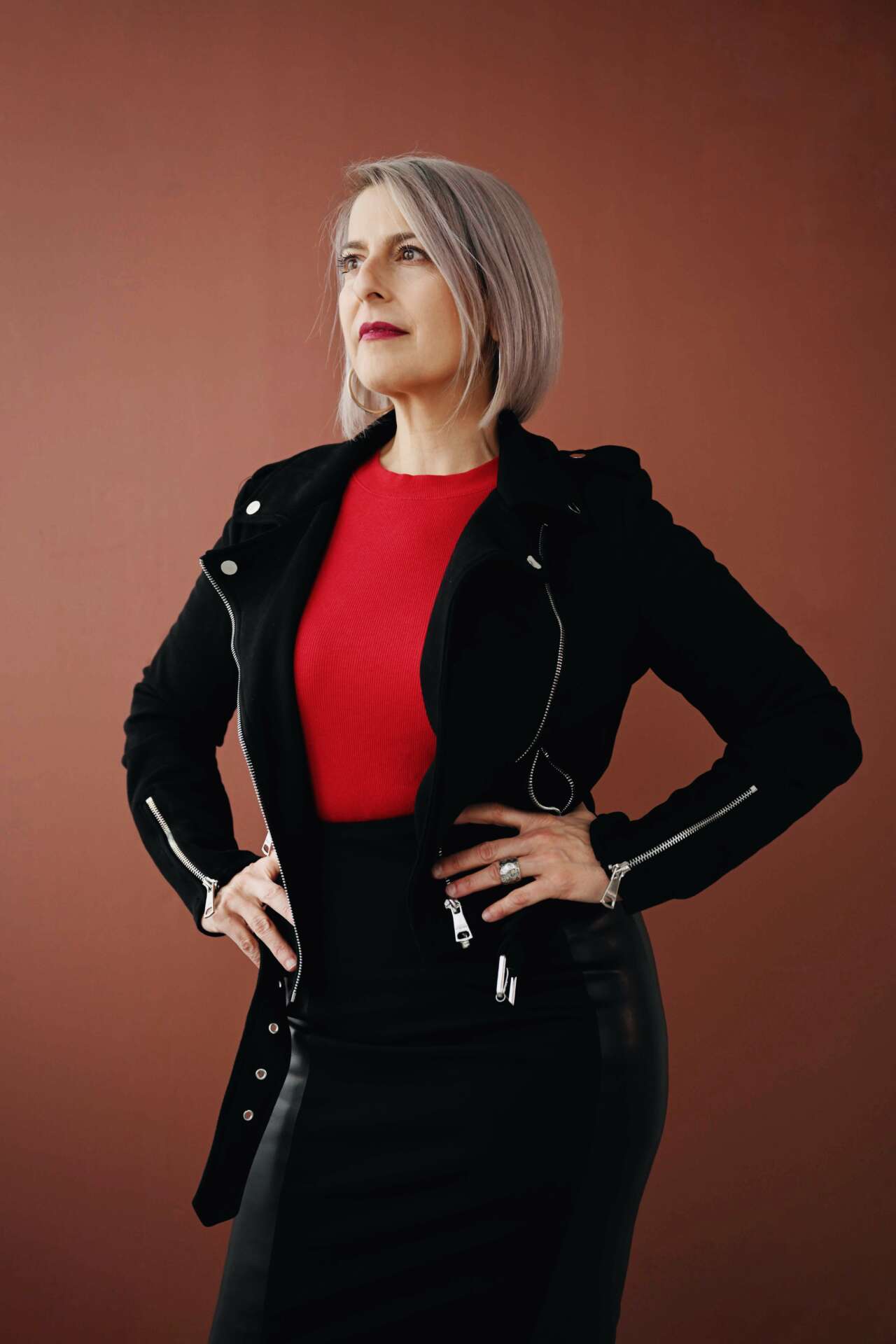We were lucky to catch up with Jennifer Yates recently and have shared our conversation below.
Jennifer, thanks for joining us, excited to have you contributing your stories and insights. To kick things off, we’d love to hear about things you or your brand do that diverge from the industry standard.
Yes! When most people hear “operations”, they immediately jump to process, systems, automations, or fancy tech tools. Not me. I always start with PEOPLE and helping them with the WAY they work. When I engage with a client, the first thing I do is understand the people working there, their personalities, their workstyles, their motivations and desires, their strengths, what they think about the work they’re doing. I also consider their ideas for making that work better. Immediately they sense that I’m treating them as the experts they are…because I am! They are! From there, I’ll analyze the kind of work they’re doing, the types of projects, project challenges, and really dig into the landscape of the business. I see patterns – what’s working, what isn’t – and at different zoom levels and scale. I’ll then build a program that not only fits the business and its work but fits the PEOPLE doing the work. As a result, people feel safe around me, are inspired by me, and trust that their views and opinions were incorporated into the programs I create for them. This human-first approach sets me apart from industry standards that focus more on the process itself or the management of it.


Jennifer, before we move on to more of these sorts of questions, can you take some time to bring our readers up to speed on you and what you do?
The path to my current business is a twisty-turny one with a ton of connective stops along the way. At first glance, those stops might seem completely unrelated. I studied then taught university-level Geography, I built geospatial statistical models, managed analytical and tech teams, led custom software development, built and closed a retail boutique, and co-founded an interactive arts fair.
My sweet spot has always been the ambiguous, misunderstood space between a dreamer’s vision and the point of execution. Because of my own imagination, understanding possibilities, I can relate to visionary leaders. On the flip side, my analytical, logical, pattern-seeing side, along with my perceptive tuning, allows me to link that vision easily and quickly to a tangible, operational business practice that puts leaders and teams at ease. They know I’ve got them!
My company Roux, a business operations consultancy, lets me continue my past and create a legacy. My clients are companies making the world and lives better socially, economically, physically, or emotionally. I want them to succeed. And because we both care, I focus on the human experience of work, by energizing businesses with success metrics that matter: increased expertise, understanding, freedom, fulfillment, revenue, retention, connection, and relief. Happy people produce higher quality results. They experience more joy, ease, and space in their everyday work. Getting day-to-day business to feel effortless is my “why”.

How do you keep your team’s morale high?
As a human-first business operations leader, this topic is near and dear to me. Understanding team strength, resiliency, and morale, is where I start any engagement.
Managing teams effectively, and in-turn, reaching high levels of morale and engagement comes from a blend of what I like to call “practical magic” and human connection. Here is a simple checklist you can follow no matter what stage of “health” your current team occupies.
The Practical: This part of the checklist focuses on tactics and exercises.
1. Set a vision and a purpose (for your team, your project, your business, your structure, your change, etc.). Then, explain it!
Get the team on-board with it. Share the “why”: why it matters, why it excites you, why it might excite them, what the end result means to them, to your customers, to the business, how the team fits into the vision, how this vision changes the current landscape, who benefits. When teams understand the vision, how they fit into it, why it’s important, they feel a part of something bigger and are more invested in its success.
2. Identify the first step, then the next, and the next. Present the roadmap.
Whatever the change, the project, the “thing”, be organized. Don’t speak willy-nilly about some abstract something that’s coming up around the corner. Doing that will generate anxiety, which will lead to “offline” conversations, and a lot of assumption-making. Instead, have a plan, a roadmap, a storyboard. Then walk the team through it. Tell them what happens first and when, then what happens next and when, and so on. Don’t stop after the first presentation. Keep them updated on a regular basis. This is what we’ve accomplished so far, here is where we are, and here are our next steps.
3. If appropriate, break-down your roadmap into bite-sized goals, milestones, and deadlines. Communicate these clearly.
4. Celebrate the wins.
As you move through your plan, be sure to recognize and honor achievements regularly. Share successes and wins and talk about WHY those wins matter, how you got there. Make it fun! Play games, let the team “popcorn” their appreciations, bouncing from one team member to another. This shouldn’t be the “Leader Show”, let it be the Team Show!
Now let’s move to the most important phase.
The Emotional: Emotional Intelligence is the key to making or breaking your success. This will take time and your serious dedication to its priority.
1. Talk to your team, learn their motivations. Appeal to them as best you can.
When you treat your team as the experts they are, they feel it. Meet with them. Ask them what THEY think could be better, ask them what motivates them in their work, what they love about their work, and what keeps them up at night. Talk to them as a group and as individuals. Then listen. Listen to what they’re saying AND what they’re not saying.
2. Inspire positive feelings around the goals.
Start rituals – daily meetings or updates, warm-ups at the start of team meetings – share client/customer feedback, invite the team to client/customer meetings, so they hear from the “other side”. If the team joins a client meeting, introduce them as “the experts driving this”. Create a safe environment that democratizes participation and feelings of safety “in the room”.
3. Make the change (or project) fun.
Take time to play games, talk about people’s families, their lives, their weekend plans, their holiday celebrations, and their travels. Create “shared experiences” and get to know each other on a real level. And for cryin’ out loud, do these things during work hours. Don’t force people to come to these events on their personal time.
4. Be okay with failures. Let the team understand that failure is part of the process.
Failing, missing, it’s a part of completing a super-complicated project or change. Let the team KNOW you understand this. Get yourself and them comfortable with moving on from mistakes swiftly. When hiccups happen, lean into the team to figure out a solution and move forward recognizing that mistakes and failures are your education.
In the end, managing a team and maintaining morale is – for me at least – all about team empowerment. When teams and individuals are treated as experts, when they are given a voice, when they are celebrated, when they feel heard, understood, and considered, they are more engaged and happier. Empowered teams are good for business.

Can you share a story from your journey that illustrates your resilience?
I failed and closed a business.
It was a retail boutique centered on the creative community, selling highly curated clothing, gifts, and accessories from small, independent designers. It was a gallery, a venue for performance, and a boutique. It was featured in national magazines, I was asked to speak at Governor Jennifer Granholm’s Cool Cities Conference, and I even won Michigan’s Best New Business Award.
People LOVED the store – for browsing, for admiring, for its emphasis on community – but they weren’t buying. Not enough anyway.
For all its achievement and accolades, the business wasn’t financially sustainable. Not even close. In just over three years, I was riddled with debt. I was anxious, stressed, and emotionally and financially exhausted. I made the difficult decision to close the store, which meant selling equipment and deeply-discounted inventory. It meant sharing the news with my customer base, with my vendors, and with the media, none having ANY IDEA things were THAT bad.
After closing the store, I wanted to disappear. I felt lost, alone, and embarrassed. I had debts to pay, a reputation that I felt was tarnished, and my business-baby was gone.
After giving myself a bit of time, I decided to focus on a new, creative project that satisfied my sense of community. I partnered with a few of the local vendors from my store, and together, we co-founded and launched an interactive arts fair that ran twice a year for seven years.
People sometimes ask me if I would do it again, even knowing that the business would fail. Absolutely yes! I got a PhD in “retail” and “resiliency”. I grew and learned in ways that no course or education can teach. Because of it, I am better equipped to understand business, to see its multiple drivers, the inputs and outcomes, but most of all, I relate to founders and entrepreneurs trying to build their dreams.
In short, here is what I learned from my experience in creating and closing a failed business.
🛍 Don’t let the possibility of failing stop you from trying!
🛍 Failure is never total. Parts will be crazy-successful.
🛍 Finding a passion project after closing down will save your mind.
🛍 How you treat customers, vendors, and fans is your legacy.
🛍 Your legacy outlasts the failure in multiples.
🛍 Many other doors will open, because you built something.
🛍 It’s okay to flip the sign to “closed” and ugly-cry.
🛍 No college degree will match the growth and learning you got.
Owning and running a business isn’t always peaches and cream. Give yourself grace. You are, and will be, different from doing it.

Contact Info:
- Website: https://www.workwithroux.com
- Linkedin: https://www.linkedin.com/in/jenniferayates/
- Other: Book a meeting: https://savvycal.com/roux/chat
Image Credits
Photos of Jennifer by Courtney Sofiah Yates (https://www.courtney-yates.com/)


